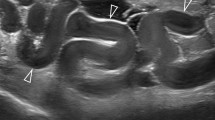Abstract
Purpose
Erectile Dysfunction (ED) is defined as the inability to obtain or maintain an erection firm enough for satisfactory sexual performance and affects the quality of life of over 50% of men aged over 40 years. Venogenic ED is elucidated as a cause in a subgroup of patients. The study aims to investigate the clinical success, technical success, safety and durability of venous embolisation for management of venogenic ED.
Methods
After providing informed consent, and subsequent to confirmation of venogenic ED by Doppler ultrasound (dUS) and cavernosography, 80 men referred for cavernosography and pelvic vein embolisation, will undergo randomisation by a computer system either to treatment or sham groups. Efficacy will be assessed using dUS and a validated questionnaire, the International Index of Erectile Function (IIEF). Pharmacologic agents used during the trial will be recorded. The primary outcome of PiVET-ED is to establish clinical success at 3 and 6 months post venous embolisation, as defined by end diastolic velocity in the cavernosal artery < 5 cm/s with dUS and by a > 4-point improvement in IIEF. Durability of the embolisation procedure will be assessed annually to 5 years. Quality of life will be assessed at all study time points using the 36-Item Short Form Survey (SF-36).
Discussion
The PiVET-ED trial is a prospective, randomised, single-blinded, single centre, sham controlled study, which aims to establish the safety, efficacy and durability of pelvic vein embolisation for the treatment of venogenic erectile dysfunction.
Clinical registration
Australian New Zealand Clinical Trials Registry ACTRN12620001023943, 08/10/2020.

Similar content being viewed by others
References
Feldman HA, Goldstein I, Hatzichristou DG, Krane RJ, McKinlay JB. Impotence and its medical and psychosocial correlates: results of the Massachusetts Male Aging Study. J Urol. 1994;151:54–61.
Brookes ST, Link CL, Donovan JL, McKinlay JB. Relationship between lower urinary tract symptoms and erectile dysfunction: results from the Boston Area community health survey. J Urol. 2008;179:250–5 (discussion 255).
Mulhall JP, Giraldi A, Hackett G, Hellstrom WJG, Jannini EA, Rubio-Aurioles E, Trost L, Hassan TA. The 2018 revision to the process of care model for management of erectile dysfunction. J Sex Med. 2018;15(10):1434–45. https://doi.org/10.1016/j.jsxm.2018.05.021.
Dean RC, Lue TF. Physiology of penile erection and pathophysiology of erectile dysfunction. Urol Clin North Am. 2005;32:379–95.
Kirby M. The circle of lifestyle and erectile dysfunction. Sex Med Rev. 2015;3:169–82.
Shamloul R, Ghanem H. Erectile dysfunction. Lancet. 2013;381(9861):153–65. https://doi.org/10.1016/S0140-6736(12)60520-0.).
Wespes E, Schulman C. Venous impotence: pathophysiology, diagnosis and treatment. J Urol. 1993;149:1238–45.
McCabe MP, Sharlip ID, Lewis R, Atalla E, Balon R, Fisher AD, Laumann E, Lee SW, Segraves RT. Risk factors for sexual dysfunction among women and men: a consensus statement from the fourth international consultation on sexual medicine 2015. J Sex Med. 2016;13(2):153–67. https://doi.org/10.1016/j.jsxm.2015.12.015 (PMID: 26953830).
Varela CG, Yeguas LAM, Rodríguez IC, Vila MDD. Penile Doppler ultrasound for erectile dysfunction: technique and interpretation. AJR Am J Roentgenol. 2020;214(5):1112–21. https://doi.org/10.2214/AJR.19.22141.
Doppalapudi S, Wajswol E, Shukla P, Kolber M, Singh M, Kumar A, et al. Endovascular therapy for vasculogenic erectile dysfunction: a systematic review and meta-analysis of arterial and venous therapies. J Vasc Interv Radiol. 2019;30:1251–8.
Stief CG, Djamilian M, Truss MC, Tan H, Thon WF, Jonas U. Prognostic factors for the postoperative outcome of penile venous surgery for venogenic erectile dysfunction. J Urol. 1994;151(4):880–3.
Rebonato A, Auci A, Sanguinetti F, et al. Embolization of the periprostatic venous plexus for erectile dysfunction resulting from venous leakage. JVIR. 2014;25:866–72.
Aschenbach R, Steiner T, Kerl MJ, Zangos S, Basche S, Vogl TJ. Endovascular embolisationtherapy in men with erectile impotence due to veno-occlusive dysfunction. Eur J Radiol. 2013;82:504–7.
Arjona MF, Oteros R, Zarca MA, Fernandez JD, Cortes I. Percutaneous embolization for erectile dysfunction due to venous leakage: prognostic factors for a good therapeutic result. Eur Urol. 2001;39:15–9.
Rosen RC, Cappelleri JC, Gendrano N. The International Index of Erectile Function (IIEF): a state-of-the-science review. Int J Imp Res. 2002;14:226–44.
Filippiadis DK, Binkert C, Pellerin O, et al. Cirse quality assurance document and standards for classification of complications: the cirse classification system. CVIR. 2017;40(8):1141–6.
Funding
This study was not supported by any funding.
Author information
Authors and Affiliations
Corresponding author
Ethics declarations
Conflict of interest
The authors declare that they have no conflict of interest.
Ethical Approval
All procedures performed in studies involving human participants were in accordance with the ethical standards of the institutional and/or national research committee and with the 1964 Helsinki Declaration and its later amendments or comparable ethical standards. The study was performed in accordance with guidelines from the Alfred Hospital Research and Ethics Committee. This material is not under submission elsewhere. Ethical approval by the Hospital Research and Ethics Committee has been granted, Project No: 354/20.
Informed Consent
For this type of study informed consent is not required.
Consent for Publication
For this type of study consent for publication is not required.
Additional information
Publisher's Note
Springer Nature remains neutral with regard to jurisdictional claims in published maps and institutional affiliations.
Rights and permissions
About this article
Cite this article
Moriarty, H.K., Kavnoudias, H., Blecher, G. et al. PIVET-ED: A Prospective, Randomised, Single-Blinded, Sham Controlled Study of Pelvic Vein Embolisation for Treatment of Erectile Dysfunction. Cardiovasc Intervent Radiol 45, 155–161 (2022). https://doi.org/10.1007/s00270-021-03021-x
Received:
Accepted:
Published:
Issue Date:
DOI: https://doi.org/10.1007/s00270-021-03021-x




